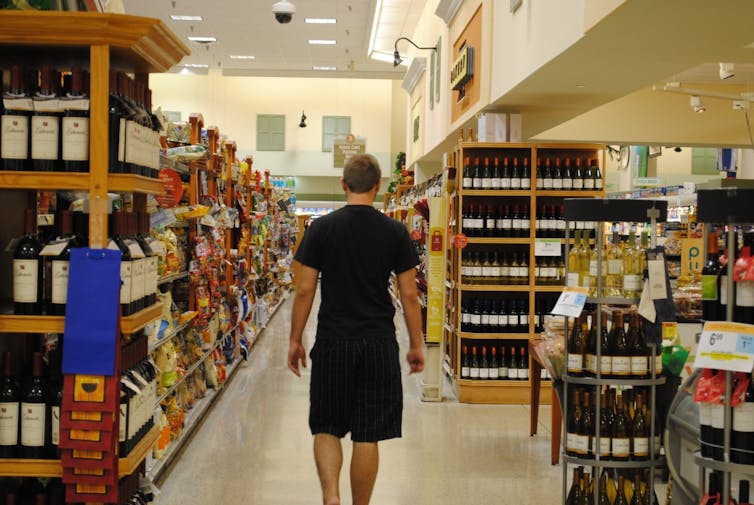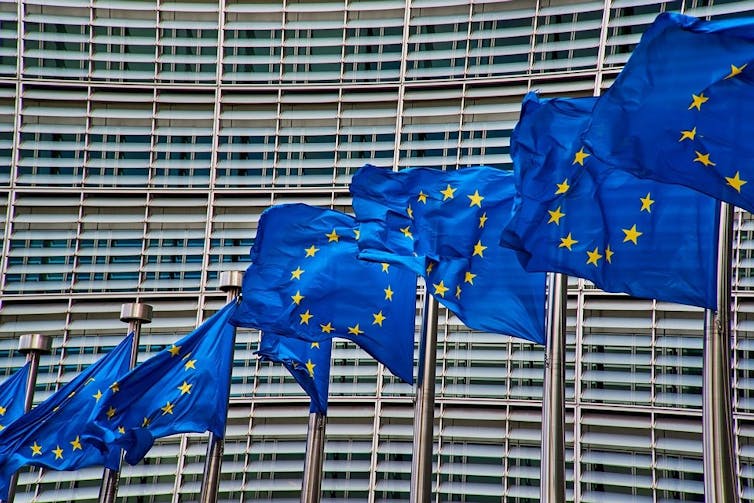Sylvaine Castellano, EM Normandie – UGEI; Insaf Khelladi, Pôle Léonard de Vinci – UGEI, and Rossella Sorio, ICN Business School
Many people have responded to the uncertainty, boredom and anxiety of the pandemic by drinking more.
In a recent study of 11 major OECD countries, 36% of people said they increased their alcohol consumption during the lockdown. Women, parents of young children and those on high incomes saw their alcohol consumption increase the most.
The OECD suggests a range of solutions to this concerning rise, including “limiting the promotion of alcohol among young audiences”, “strengthening police controls to prevent road accidents due to alcohol” and “setting pricing policies to limit the financial accessibility of alcohol” to prevent excessive alcohol consumption.
But there’s another possible solution: the promotion of wine with a low or even zero alcohol content. This approach is already seeing success with beer and other non-alcoholic beverages, including whisky and gin, particularly among millennials.
Although still marginal, no and low-alcohol (NoLo) beverages currently represent 3% of the global beverage alcohol market in ten headline economies, reaching global sales values of $4,520 million in 2020.
A legitimacy issue
Dealcoholised wines are produced through a gradual, or even total, elimination of alcohol content via evaporation, reverse osmosis or preventing fermentation.
These things are relatively easily done, but the main challenge is to eliminate the alcohol without altering the taste of the wine. Great progress has been made in this direction, but at present dealcoholised wine still does not fully taste the same as a traditional wine, and does not offer a genuine alternative.
And if we do manage to create a product that tastes like the real thing, could we still call a partially or totally dealcoholised product “wine”? Our research from 2019 found that the changing a product’s alcohol content affects how people categorise it. Only few respondents to our study identified low-alcohol wine as a wine.
In another, forthcoming study, we identified the limits of acceptability of this new product. Two-thirds of potential consumers consider alcohol to be an important product attribute and therefore believe that this innovation does not belong to the “wine” category at all.

Regulations also have an impact on legitimacy. The law in France, for example, states that wine is “a drink that results exclusively from the complete or partial alcoholic fermentation of fresh grapes (crushed or not) or from grape must”, with an alcohol content of more than 8.5%.
Remove the alcohol, and the product will no longer legally be considered wine.
The problem of categorisation
Wine is far from the first product to face issues of categorisation in this way.
In Europe, the label “milk” is defined by regulations as “the produce of the milking of one or more cows”. In 2017, the European Court of Justice enforced this regulation by prohibiting the use of the words “milk” and “cheese” to refer to plant-based versions of these products, in response to claims from dairy producers that such labels would confuse consumers.
But when it comes to meat, the European Parliament decided in 2020 to authorise the use of meat-related words to describe plant-based foods. As such, the terms “veggie burgers”, “soy steaks” and “vegan sausages” can all be used in the European Union.
The exception is in France, where the law clearly stipulates that words used for food with animal origin cannot be used to designate products made using vegetable proteins.
Ongoing debate in Brussels
A growing number of wine producers, large and small, have now started to produce dealcoholised products, and they are demanding the right to use the term “wine” for these new beverages. The debate is currently raging in Brussels, where the European Commission is discussing the reform of the common agricultural policy and the harmonisation of community rules, including the reform of Article 180 on wines.

Depending on how the negotiations go, we could soon apply the term “wine” to de-alcoholised products, albeit in a strictly controlled and regulated fashion.
Applying a regulation that links these products to the world of wine, probably in the form of a subcategory, will allow consumers to better identify these beverages and understand their inherent benefits.
The acceptance of low or no-alcohol wine will also depend on serious communication efforts from wine producers and retailers about these products.
As professionals work more on the legitimacy issue, de-alcoholised wine will become more widely known and consumed, thus reducing the psychological barriers linked to its uptake. This could see the alcohol content of wine become a decisive criterion in consumer decision-making and help overcome the issues many potential buyers currently have with identifying de-alcoholised products as “wine”.
The main challenge, then, is to improve the taste of wine that doesn’t contain alcohol. It is possible that, in the near future, advances in alcoholization techniques will reduce the difference between traditional and NoLo wines, as is already the case with beer and spirits. The future of these new products will depend on whether wine producers can truly succeed in reducing the taste gap.
Sylvaine Castellano, Directrice de la recherche, EM Normandie – UGEI; Insaf Khelladi, Professeur Associé en Marketing, Pôle Léonard de Vinci – UGEI, and Rossella Sorio, Professeure Associée, Département Marketing ICN BS, ICN Business School
This article is republished from The Conversation under a Creative Commons license. Read the original article.


